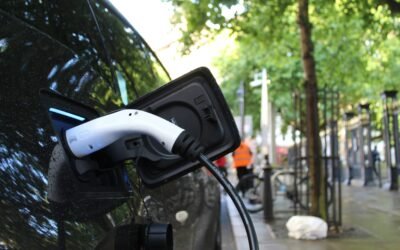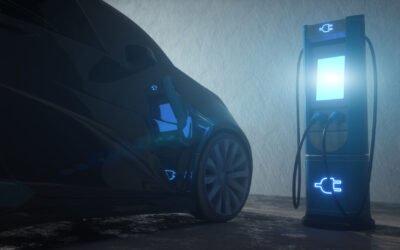• E-mobility can contribute significantly to environmental and climate protection as it reduces dependence on the imports of fossil energy sources, owing to its greater use of renewable energies and its enhanced energy efficiency.
• The sales of electric passenger cars more than doubled in 2021, from 3.1 Million global sales in 2020 to 6.3 Million. It is evident that investments made by the auto industry in alternatively powered vehicles are bearing fruit.
• The International Energy Agency has identified five focus areas for E-mobility acceleration. These include maintaining and adapting support for EVs, first and foremost.
The transition towards electric vehicles and e-mobility is growing steadily across Europe and the rest of the world. Public transport, consumer vehicles and company fleets are all part of this, but in order for the transition to be a success, government support in the form of growth and emission targets, incentives, subsidies are necessary along with the need to develop favorable conditions that would help in changing consumer behavior towards adaption of electric vehicles. E-mobility can contribute significantly to environmental and climate protection as it reduces dependence on the imports of fossil energy sources, owing to its greater use of renewable energies and its enhanced energy efficiency.
Few areas in the world of clean energy are as dynamic as the electric car market. The sales of electric passenger cars more than doubled in 2021, from 3.1 Million global sales in 2020 to 6.3 Million. It is evident that investments made by the auto industry in alternatively powered vehicles are bearing fruit. Indeed, despite a shrinking vehicle market last year, electrically-charging automobiles maintained their overall market share. However, this trend can only be sustained if governments step up investments in infrastructure and maintain meaningful and sustainable incentives.
Trends in Key Markets
The success of EVs is driven by multiple factors, with sustained policy support being the main pillar. A growing number of countries have pledged to phase out internal combustion engines (ICEs) or have ambitious vehicle electrification targets for the coming decades. Meanwhile, most encouragingly, many car manufacturers have plans to electrify their fleets that go beyond policy targets.
China
The increase in EV sales in 2021 was primarily led by the People’s Republic of China, which accounted for half of the growth. More electric vehicles were sold in China in 2021 (3.3 Million) than in the entire world in 2020. China accounts for 95% of new registrations of electric two- and three-wheeler vehicles and 90% of new electric bus and truck registrations worldwide.
China’s fleet of electric cars remained the world’s largest at 7.8 Million in 2021, which is more than double the stock of 2019 before the Covid-19 pandemic. Over 2.7 Million BEVs were sold in China in 2021, accounting for 82% of new electric car sales. Electric cars accounted for 16% of domestic car sales in 2021, up from 5% in 2020, and reached a monthly share of 20% in December, reflective of how EV markets recover more quickly relative to the conventional car market. This impressive growth comes alongside government efforts to accelerate decarbonization in the new 14th Five-Year Plan (FYP) (2021-2025), continuing the trend of progressively strengthening policy support for EV markets in the past few FYP periods. The current FYP includes medium-term objectives in transport such as reaching an annual average of 20% market share for electric car sales in 2025. Notably, China had extended subsidies for electric cars for two years in the wake of the pandemic, with a planned scale-back of 20% in 2021 and 30% in 2022 – but by the end of 2022 they will be phased out. There are also a number of subnational regulations that give preferential treatment to EVs, such as local subsidies or tax breaks, financial incentives, and exemptions from purchase limitations. Growth in 2021, despite declining subsidies, is indicative of the maturing of China’s EV markets. Consumer anticipation of declining subsidies may also have supported record high sales, although the pace at which subsidies effectively decline warrants further examination. China’s electric car market can be expected to further expand in 2022 and beyond, as investments from previous years ramp up production capacity and bear fruit.
By contrast, EV sales are still lagging in other emerging and developing economies, where the few models that are available remain unaffordable for mass-market consumers. In Brazil, India, and Indonesia, fewer than 0.5% of car sales are electric. However, EV sales doubled in a number of regions in 2021 – including in India– which could pave the way for quicker market uptake by 2030 if supporting investments and policies are in place. The figure below represents EV data for a snapshot of this.

Europe
In Europe, electric car sales continued to increase in 2021, by more than 65% year-on-year growth to 2.3 Million, after the boom of 2020. EV sales remained strong even though the overall automotive market has not yet fully recovered from the pandemic: total car sales in 2021 were 25% lower than in 2019. Over the 2016-2021 period, EV sales in Europe increased by a compound annual growth rate (CAGR) of 61%, the world’s highest, above China (58%) and the United States (32%). Overall, electric cars accounted for 17% of Europe’s auto sales in 2021. Monthly sales were highest in the last quarter, when electric cars reached a 27% sales share and surpassed diesel vehicles for the first time.
However, the distribution is uneven across countries in Europe. The largest market, in terms of the number of EVs sold, remains Germany, where electric cars accounted for 25% of new cars sold overall, which increased to one-in-three in November and December. This is reflective of Germany’s favorable EV climate: for example, the country offers some of the highest subsidies in Europe. The highest market share for new electric car sales, in 2021, in Europe were Norway (86%), Iceland (72%), Sweden (43%), and the Netherlands (30%), followed by France (19%), Italy (9%) and Spain (8%). For the first time, in 2021, the bigger market of the United Kingdom was not included in European Union-wide regulations, although it has put in place national law that mirrors EU regulations. The key driver underpinning EV growth in Europe is the tightening CO2 emissions standards that occurred in 2020 and 2021. The expansion of purchase subsidies and tax benefits in major markets also contributed to the acceleration of sales.
Sales of petrol cars dropped by 2.3 Million units over the past five years, reaching 3.9 Million units last year (down by 37%). Electrically-chargeable cars – battery electric and plug-in hybrids combined – increased by a total of almost 1.6 Million units over the five-year period. This represents more than a 10-fold increase.
Within the electrically-chargeable category, there is almost a 50-50 split between battery electric and plug-in hybrids – with both showing a similar growth trajectory over the past five years. The electrically-chargeable car market grew by almost 17 percentage points over the last five years. Sales of battery electric cars and plug-in hybrids grew by over 8 percentage points each over this timeframe. During the same period, the share of hybrid electric vehicles also increased by nearly 17 percentage points.
Hybrid electric cars make up more than half the ‘electrified’ car market, with a market share over twice that of battery electric. 13 EU member states have a battery electric car (BEV) market share of less than 4%. Five member states have a BEV market share less than 2%. 12 countries have a BEV market share of over 5%. Hybrid electric cars (HEV) dominate the alternatively-powered car market in most countries. 22 member states have a HEV share of over 10%.
The U.S.
After two years of consecutive declines of 10%, electric car sales increased in the United States in 2021. About 630,000 electric cars were sold – more than in 2019 and 2020 combined – bringing the total stock of electric cars to over 2 Million. About 75% of new EV sales were BEVs, up from 55% just five years ago, resulting in a higher share of BEVs relative to PHEVs today over the total EV stock (65%) than in 2015-2016 (about 50%). Relative to other regions, the overall car market recovered faster from the pandemic in the United States, but electric cars still doubled their share to 4.5% in 2021. Tesla accounts for over half of all units sold, and there are generally fewer models available in the United States than in other major markets. Some of the main drivers underpinning growth in the U.S. in 2021 were the increased production of Tesla models and the availability of new generation electric models by incumbent automakers.
Looking Ahead
Moving forward, the International Energy Agency has identified five focus areas for E-mobility acceleration. These include maintaining and adapting support for EVs, first and foremost. Policy-led development to provide a boost to the heavy-duty market is also recommended. Furthermore, expanding the EV infrastructure grid and promoting EVs in the developing economies are also crucial goals. Finally, making sure EV supply chains are resilient to shocks will ensure the security and growth of the global EV market in the coming years.
EV Charging Infrastructure Service Overview
The research presented in this article is from PTR's EV Charging Infrastructure market research. For information about this service please submit a request shown below.
Contact Sales:
Europe
+49-89-12250950
Americas
+1 408-604-0522
Japan
+81-80-7808-1378
GCC/Rest of APAC
+971-58-1602441
More about our:
EV Charging Infrastructure Market Research
Recent Insights
Exploring the European EVCI Services Market Key Players and Emerging Trends
There has been a significant surge in the development of EVCI due to the widespread adoption of EVs in Europe. By 2030, it is expected that Europe...
Nordics EVCI Market Comparison: Quarterly Growth and Market Dynamics – 2024
This infographic examines the ambitious policies and regional targets that are propelling the growth of Electric Vehicle Charging Infrastructure...
Electrifying Future: Emerging Trends and Strategic Targets in the Middle East
This infographic presents an overview of the burgeoning electric vehicle (EV) market in the Middle East. It highlights the region's ambitious...


